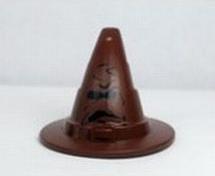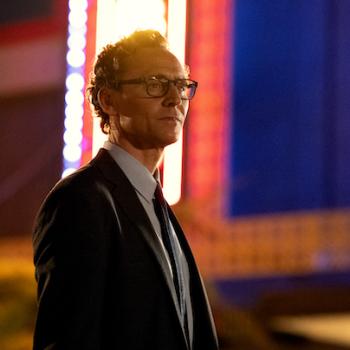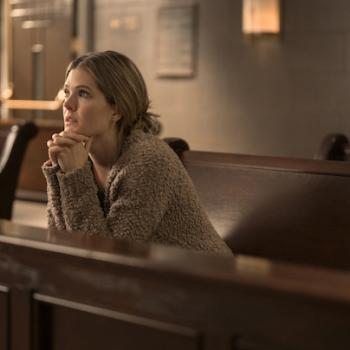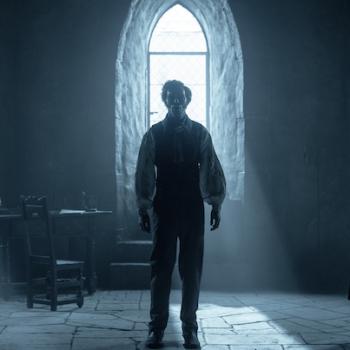 Has there ever been a work of literature that couldn’t be improved by rank amateurs taking said literature and molding it into something that suits their sensibilities? I thought not. Who needs pesky authors challenging our pre-existing worldviews? Personally, I think Joseph Conrad’s Heart of Darkness could stand a happier ending, while still containing some of the grit. Perhaps we could call it Heart of Dimness.
Has there ever been a work of literature that couldn’t be improved by rank amateurs taking said literature and molding it into something that suits their sensibilities? I thought not. Who needs pesky authors challenging our pre-existing worldviews? Personally, I think Joseph Conrad’s Heart of Darkness could stand a happier ending, while still containing some of the grit. Perhaps we could call it Heart of Dimness.
Naturally, I’ve been following the story of Grace Anne Parsons’ work with interest.
Writing as “proudhousewife,” Ms. Parsons has taken it upon herself to revise J.K. Rowling’s Harry Potter stories into Christianese. In her retelling (now through nine chapters), Professor Dumbledore is a reverend, Hagrid as a hairy and aggressive evangelist and Harry Potter as a newfound child of God. It praises the virtues of obedience, domestic bliss and, of course, the saving grace of God. And it seems to split different branches of Christianity into Hogwart’s famous “houses.”
Parsons’ work has been much discussed on the Internet, including here at Patheos. And lots of that discussion has surrounded whether Parsons is a sincere author or if her work is a hoax. “Oh, God, please let it be parody,” says The God Article’s Mark Sandlin. “Please?”
 I won’t even attempt to guess as to whether Parsons is sincere or not—though at times, her writing displays a better understanding of evangelical stereotypes than Harry Potter. In her story, for instance, the “sorting hats” seem to be colorful baseball caps that magically appear on someone’s head once they choose a house. Perhaps Parsons not only skipped the books and movies, but also failed to pay attention to the Harry Potter LEGO sets?
I won’t even attempt to guess as to whether Parsons is sincere or not—though at times, her writing displays a better understanding of evangelical stereotypes than Harry Potter. In her story, for instance, the “sorting hats” seem to be colorful baseball caps that magically appear on someone’s head once they choose a house. Perhaps Parsons not only skipped the books and movies, but also failed to pay attention to the Harry Potter LEGO sets?
But alas, Parsons may be a bit late to the party. Harry Potter already became, in a sense, a Christian story—and it was made so by Rowling herself.
“To me, [the religious parallels have] always been obvious,” Rowling said after the publication of Harry Potter and the Deathly Hallows. “But I never wanted to talk too openly about it because I thought it might show people who just wanted the story where we were going.”
The Deathly Hallows is the climactic finale, where Harry Potter sacrifices himself and “dies,” in a sense, only to be brought back to life. Right there, you have a pretty explicit echo of Christianity, which become more resonant when taken with what happens in Chapter 16: There, Harry Potter visits his parents’ graves and reads on their tombstone, “The last enemy that shall be destroyed is death,” from 1 Corinthians 15:26. And on another tombstone, we find, “Where your treasure is, there will your heart be also.” That’s from Matthew 6:19.
“I think those two particular quotations he finds on the tombstones at Godric’s Hollow, they sum up—they almost epitomize the whole series,” Rowling said.
There are more Christian allusions—so many that whole books have been written on the subject
Now, perhaps the allusions found in the original books are not as, um, explicit as Parsons’ revamped tale, where Hagrid encourages Harry to recite the Sinner’s Prayer before heading off to Hogwarts School of Prayer and Miracles. And this is not to demean Christians who have steered clear of the books because of the magic contained therein. While I don’t think that Rowling’s books have influenced many to pick up the dark arts (though some, apparently, have taken up Quidditch), I’m far from an expert on this sort of thing. I can, in the end, only speak for myself.
And for myself, I found the Harry Potter books not just fun and thrilling, but most of all, spiritually resonant—a magical story that drew my attention to the greatest story of all.













